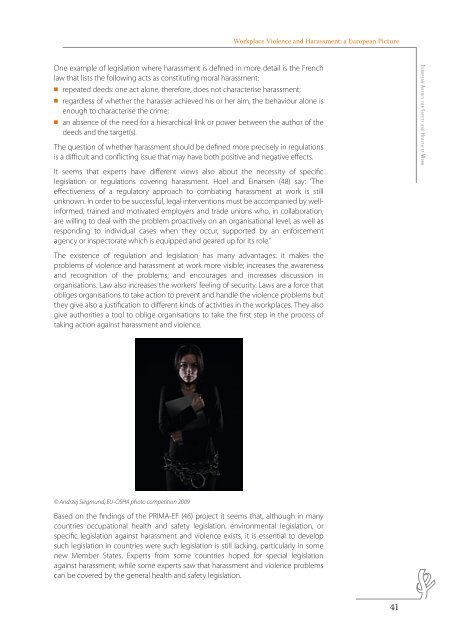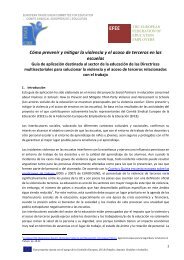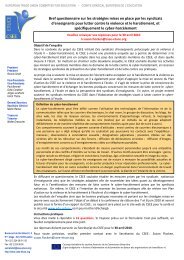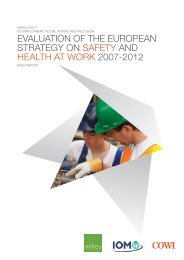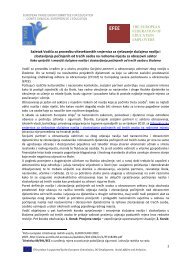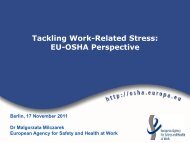Workplace Violence and Harassment: a European Picture
Workplace Violence and Harassment: a European Picture
Workplace Violence and Harassment: a European Picture
You also want an ePaper? Increase the reach of your titles
YUMPU automatically turns print PDFs into web optimized ePapers that Google loves.
<strong>Workplace</strong> <strong>Violence</strong> <strong>and</strong> <strong>Harassment</strong>: a <strong>European</strong> <strong>Picture</strong>One example of legislation where harassment is defined in more detail is the Frenchlaw that lists the following acts as constituting moral harassment:OO repeated deeds: one act alone, therefore, does not characterise harassment;OO regardless of whether the harasser achieved his or her aim, the behaviour alone isenough to characterise the crime;OO an absence of the need for a hierarchical link or power between the author of thedeeds <strong>and</strong> the target(s).The question of whether harassment should be defined more precisely in regulationsis a difficult <strong>and</strong> conflicting issue that may have both positive <strong>and</strong> negative effects.It seems that experts have different views also about the necessity of specificlegislation or regulations covering harassment. Hoel <strong>and</strong> Einarsen (48) say: ‘Theeffectiveness of a regulatory approach to combating harassment at work is stillunknown. In order to be successful, legal interventions must be accompanied by wellinformed,trained <strong>and</strong> motivated employers <strong>and</strong> trade unions who, in collaboration,are willing to deal with the problem proactively on an organisational level, as well asresponding to individual cases when they occur, supported by an enforcementagency or inspectorate which is equipped <strong>and</strong> geared up for its role.’The existence of regulation <strong>and</strong> legislation has many advantages: it makes theproblems of violence <strong>and</strong> harassment at work more visible; increases the awareness<strong>and</strong> recognition of the problems; <strong>and</strong> encourages <strong>and</strong> increases discussion inorganisations. Law also increases the workers’ feeling of security. Laws are a force thatobliges organisations to take action to prevent <strong>and</strong> h<strong>and</strong>le the violence problems butthey give also a justification to different kinds of activities in the workplaces. They alsogive authorities a tool to oblige organisations to take the first step in the process oftaking action against harassment <strong>and</strong> violence.E u r o p e a n Ag e n c y f o r Sa f e t y a n d He a l t h a t Wo r k© Andrzej Siegmund, EU-OSHA photo competition 2009Based on the findings of the PRIMA-EF (46) project it seems that, although in manycountries occupational health <strong>and</strong> safety legislation, environmental legislation, orspecific legislation against harassment <strong>and</strong> violence exists, it is essential to developsuch legislation in countries were such legislation is still lacking, particularly in somenew Member States. Experts from some countries hoped for special legislationagainst harassment, while some experts saw that harassment <strong>and</strong> violence problemscan be covered by the general health <strong>and</strong> safety legislation.41


